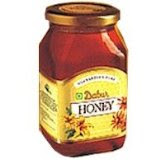 In my quest to document Indian brands I had made a list of those which i would like to write about and there were quite a few retail brands in that (one of the reasons could be that retail is not still open fully to foreign players). Kishore Biyani's - Pantaloons and Big Bazaar are on top of the list. They have contributed to Indian retail by being pioneers and reshaping the retail landscape in the country by adapting to conditions in the country. But the post is not about BigBazzar, which would deserve a separate post but on Subhiksha, largest retailer in the country. But unfortunately the post was triggered by the news that the retail slow down is forcing them to close down half of their 1600 outlets. More about that later, first on what Subhiska offers to the Indian consumer.
In my quest to document Indian brands I had made a list of those which i would like to write about and there were quite a few retail brands in that (one of the reasons could be that retail is not still open fully to foreign players). Kishore Biyani's - Pantaloons and Big Bazaar are on top of the list. They have contributed to Indian retail by being pioneers and reshaping the retail landscape in the country by adapting to conditions in the country. But the post is not about BigBazzar, which would deserve a separate post but on Subhiksha, largest retailer in the country. But unfortunately the post was triggered by the news that the retail slow down is forcing them to close down half of their 1600 outlets. More about that later, first on what Subhiska offers to the Indian consumer.Subhiskha evolved a model of retail which is unique to India or as Mr R Subramanian would like to put it the 'Indian Format of Retailing'. They did not try and ape the international retail model, of having larger stores with air conditioning and other extra frills. Their typical shops are much smaller in size and in a prime localities in a city with no air conditioning and fancy shelves and designer lights.
The value proposition that Subhiskha offers to the typical India consumers is load and clear, first convenience - by locating them in key locations within the city they are actually more accessible than there larger cousins , so no need to drive and reach them. And the consumer can afford to buy in smaller quantities and more frequently. The second value to the customer was in terms of savings , most of the products sold in Subshikha would be sold on discount . As any one who would have bought at Subhiska would have observed the clear price advantage that they would get.
Only thing which went against them that was that one could not be get all brands that they wanted in their outlets; essentially the choice was limited. It could have been driven by strategy of stocking a few brands on which they were able to get a good offer from the manufactures or supply chain bottlenecks. So there would be many consumers who would come and buy a few products from them and go on to buy the others from another retailer.
 The Subhiska story has been highlighted in the media as a success, link . Story of R Subramanian of Subhiskha is one which inspires many of us, a first generation entrepreneur who went on to build the largest retail chain in India. More can be read about him in the book 'Stay hungry and Foolish' which documents the stories of 25 entrepreneurs from IIMA.
The Subhiska story has been highlighted in the media as a success, link . Story of R Subramanian of Subhiskha is one which inspires many of us, a first generation entrepreneur who went on to build the largest retail chain in India. More can be read about him in the book 'Stay hungry and Foolish' which documents the stories of 25 entrepreneurs from IIMA. Coming back to the current crisis which they are supposedly going through, could be the result of a multitude of factors; the overall slow down in retail sales, the rapid expansion that they have done in the last year or so, which would be leading to operational issues. My opinion is that Subhishka is not new to difficult times and in the past gone through them successfully and come out stronger , hopefully this around also the story would be same, though the current issues seem more challenging....

 I had written earlier about the phenomenon of private labels in India,
I had written earlier about the phenomenon of private labels in India, 






.jpg)






